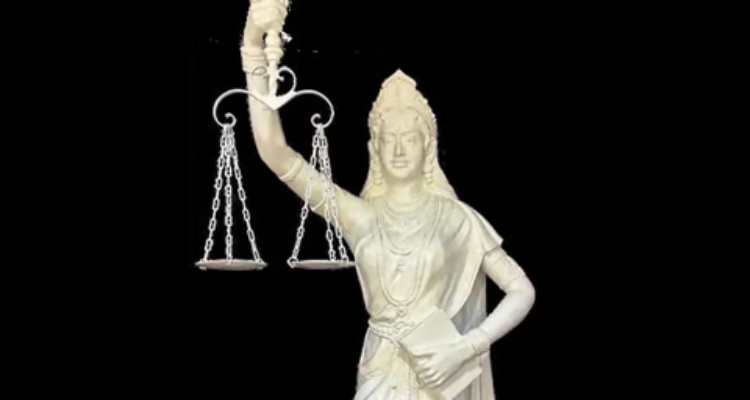
In a significant and symbolic move, a new statue of the Lady of Justice has been unveiled at the Supreme Court, featuring notable changes that reflect a departure from traditional imagery.
The statue’s blindfold, which typically represents impartiality, has been removed. In its left hand, the Indian Constitution now replaces the sword, while the Lady of Justice is adorned in a saree instead of the customary Western robe. This transformation highlights a shift toward embracing Indian cultural identity.
Commissioned under the guidance of Chief Justice DY Chandrachud, this statue, located in the Supreme Court’s Judges’ Library, is intended to convey a powerful message: justice in India is not blind, but rather sees everyone equally. The new attire further emphasizes a deep-rooted connection to Indian traditions.
These changes are part of a broader initiative to modernize India’s justice system and move away from colonial legacies. There is a concerted effort to replace outdated colonial-era laws, such as the Indian Penal Code, with more contemporary legal frameworks, including the Bharatiya Nyaya Sanhita.
The removal of the blindfold signifies the court’s commitment to an open and equal vision for all citizens. However, the scales of justice in the statue’s right hand remain intact, symbolizing the delicate balance that courts strive to maintain when evaluating the arguments presented by both sides.
This statue is seen as part of Chief Justice Chandrachud’s broader vision to modernize the judiciary and foster an Indian identity grounded in constitutional values. By replacing symbols of the British colonial era with representations that resonate with Indian heritage, the judiciary aims to reflect the evolving societal norms and aspirations of the country.
The unveiling of this statue is more than just an aesthetic change; it embodies a significant shift in the ethos of the Indian legal system. It serves as a reminder of the commitment to justice that is accessible and relevant to all citizens. The emphasis on Indian cultural elements, such as the saree, signals a deeper recognition of the nation’s identity and values.
In a world where justice is often viewed through the lens of impartiality, this new representation invites a re-examination of what it means to be fair and equitable in a diverse society. As the Indian judiciary embraces its cultural roots, it opens the door to a legal framework that is not only modern but also reflective of the rich tapestry of Indian life.
This initiative marks a significant step toward an inclusive and contemporary judiciary, aiming to inspire trust and confidence among the public. By aligning the symbols of justice with the spirit of the nation, the Supreme Court is poised to play a crucial role in shaping a legal landscape that resonates with the realities of modern India.




